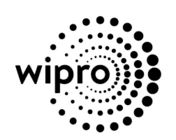Page 1, showing results 1-25 out of 28
Location
Duration
Start Date
Price
1619178 2020-08-10 AU Melbourne coursemons Lean Six Sigma Analyst
LVC, Australia
4 Days
15th Aug 2024
1628840 2020-08-10 AU Sydney coursemons Lean Six Sigma Analyst
LVC, Australia
4 Days
15th Aug 2024
1725347 2020-08-10 Berlin coursemons Lean Six Sigma Analyst
LVC, Germany
4 Days
15th Aug 2024
1713558 2020-08-10 Paris coursemons Lean Six Sigma Analyst
LVC, France
4 Days
15th Aug 2024
1647919 2020-08-10 Auckland coursemons Lean Six Sigma Analyst
LVC, New Zealand
4 Days
15th Aug 2024
1638496 2020-08-10 AU Canberra coursemons Lean Six Sigma Analyst
LVC, Australia
4 Days
15th Aug 2024
1657034 2020-08-10 Wellington coursemons Lean Six Sigma Analyst
LVC, New Zealand
4 Days
15th Aug 2024
1678561 2020-08-10 San Francisco coursemons Lean Six Sigma Analyst
LVC, United States
4 Days
15th Aug 2024
1667130 2020-08-10 New York coursemons Lean Six Sigma Analyst
LVC, United States
4 Days
15th Aug 2024
1737176 2020-08-10 Milan coursemons Lean Six Sigma Analyst
LVC, Italy
4 Days
15th Aug 2024
1749007 2020-08-10 Madrid coursemons Lean Six Sigma Analyst
LVC, Spain
4 Days
15th Aug 2024
1690102 2020-08-10 Chicago coursemons Lean Six Sigma Analyst
LVC, United States
4 Days
15th Aug 2024
1701792 2020-08-10 London coursemons Lean Six Sigma Analyst
LVC, United Kingdom
4 Days
15th Aug 2024
1576634 2020-09-07 Chicago coursemons Lean Six Sigma Analyst
Chicago, United States
4 Days
11th Sep 2024
1534757 2020-09-07 AU Melbourne coursemons Lean Six Sigma Analyst
Melbourne, Australia
4 Days
12th Sep 2024
1569726 2020-09-07 San Francisco coursemons Lean Six Sigma Analyst
San Francisco, United States
4 Days
12th Sep 2024
1551478 2020-09-07 Auckland coursemons Lean Six Sigma Analyst
Auckland, New Zealand
4 Days
12th Sep 2024
1562929 2020-09-07 New York coursemons Lean Six Sigma Analyst
New York, United States
4 Days
12th Sep 2024
1556934 2020-09-07 Wellington coursemons Lean Six Sigma Analyst
Wellington, New Zealand
4 Days
12th Sep 2024
1582639 2020-09-07 London coursemons Lean Six Sigma Analyst
London, United Kingdom
4 Days
12th Sep 2024
1595550 2020-09-07 Berlin coursemons Lean Six Sigma Analyst
Berlin, Germany
4 Days
12th Sep 2024
1588596 2020-09-07 Paris coursemons Lean Six Sigma Analyst
Paris, France
4 Days
12th Sep 2024
1749008 2020-09-14 Madrid coursemons Lean Six Sigma Analyst
LVC, Spain
4 Days
12th Sep 2024
1602571 2020-09-07 Milan coursemons Lean Six Sigma Analyst
Milan, Italy
4 Days
18th Sep 2024
1540300 2020-09-07 AU Sydney coursemons Lean Six Sigma Analyst
Sydney, Australia
4 Days
19th Sep 2024














